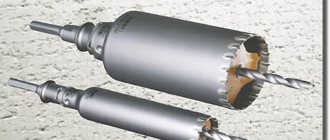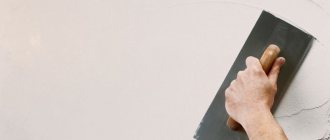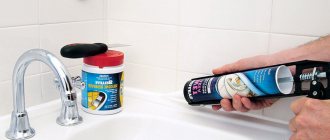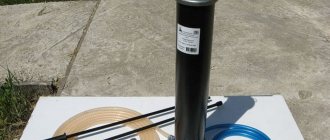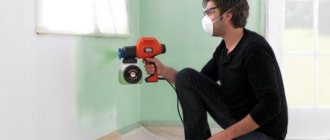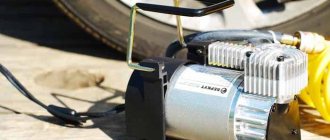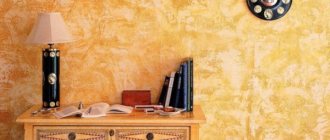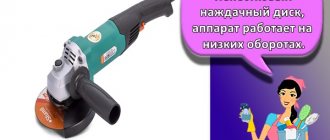It is not uncommon for household chores to require painting of various products and devices. For such purposes, a brush or roller is used, but these tools do not always achieve the desired result. Another thing is the spray gun, which, in addition to quickly applying a paint layer, is also distinguished by the accuracy of applying paintwork. When the need arises to use a tool, you immediately have to turn to the Internet for help by entering a request - how to use a spray gun.
What is a spray gun
A spray gun is a type of pneumatic tool that is used to apply paints and varnishes to various surfaces. This tool works in conjunction with a compressor. Due to its unique design, paint is sprayed and applied to the surface to be painted.
It should be noted right away that the material is about pneumatic spray guns. They are also known as sprayers, atomizers and pneumatic paint and varnish guns. They only work in conjunction with air compressors. In addition to pneumatic spray guns, there are also electric ones that operate from an electric motor. To understand how a paint gun functions, you need to consider its design.
Our selection will help you choose the best spray gun
Electric spray gun Zubr KPE-500
Model for working with acrylic primers, various types of paints and enamels. The HVLP system increases the productivity of the device. Pros: no paint bleeding or fogging, five years extended warranty, adjustable dispenser and nozzle shape. The kit includes a glass for checking the viscosity of the paint and varnish material. Buyers' recommendation: rinse the tool thoroughly immediately after use.
This spray gun copes with painting walls and ceilings with water-based paints. Suitable for pastry work!
Electric spray gun QUATTRO ELEMENTI Maestro W-600
HVLP spray gun with a power of 600W for painting the house inside and outside. The manufacturer has provided for adjusting the shape of the spot: circle, horizontal and vertical. The air pressure can be adjusted from 0.1 to 0.3 bar. Buyers note the economical consumption of paint and ease of use due to the shape of the handle. The model is intended for primers, varnish, drying oil, glaze.
If you need to choose a spray gun for varnish, then this option is optimal. There is positive experience of using it to varnish garden furniture and gazebos in a country area.
Electric paint sprayer KE 400P ELITECH 189845e
With a power of 400 watts, this spray gun produces 800 ml per minute. Another plus is the low weight and 800 ml tank. It works smoothly and quite quietly. This is a household spray gun with a plastic nozzle and needle, it is intended for repair work only.
Painting a fence and two small rooms in a country house was easy. For larger-scale work, I advise experienced buyers to take a spray gun with a large tank volume.
Electric paint sprayer PATRIOT SG 500 170303505
Option for professional and long-term work. Tank volume 1.3 liters, productivity up to 900 ml per minute. There were no complaints from buyers regarding ergonomics or assembly quality. Regular users do not recommend using it for painting surfaces with paint or whitewash residues - the new coating will stain. There are no such problems with painting the final finish.
An electric spray gun is enough for an average of 2000 m2. Suitable for pastry work!
Spray gun Zubr KPE-350
Spray gun for painting a house, walls, ceiling. Can be used for varnishing or coating with drying oil furniture and wooden buildings. The spray pattern is adjustable, works according to the HVLP system, productivity up to 700 ml/min. Standard nozzle is 1.8mm, 2.6mm can be installed. Among the disadvantages, buyers note problems with selecting paint viscosity.
Renewing paint and varnish coatings in a country house or in a small private house is a task for this spray gun. Suitable for pastry work!
Pneumatic spray gun device
If the farm has an air compressor, then with its help you can expand the possibilities of painting work. To do this, you will need to purchase a spray gun, which has a simple design and allows you to spray paint onto the surface to be painted. The photo below shows the appearance of the spray gun in section with the designation of the main components and parts.
The basis of this device is the body, which is made of steel. There are also plastic spray guns, but they have a limited resource and are usually intended for one-time use. The housing design has various regulators and a trigger. If everything is clear with the trigger, then difficulties arise with the purpose of the regulators. The main components of a pneumatic spray gun:
- Trigger lever or trigger. When pressed, paint is sprayed onto the surface.
- A tank is a container or reservoir into which consumables are refilled - varnish, paint, etc.
- Material feed regulator - located on the front side at the top of the tool. It allows you to regulate the amount of paint supplied when painting
- Air supply regulator - located below the device for adjusting the paint supply. The air regulator is designed to set the pressure of the supply air through which the paint is sprayed
- Torch size regulator - it is used to adjust the shape and size of the torch
- Nozzle - a removable part that has a hole in the center for supplying material, as well as holes for supplying air to the nozzle
- Air cap or nozzle - allows you to adjust the shape of the jet from flat to round. The nozzle design has a nozzle through which paint comes out, as well as air channels for spraying paintwork material
When the trigger is pressed, paint and compressed air are simultaneously supplied, thereby painting the surface. To understand how to use a spray gun, you need to understand the principle of its operation. Understanding the principle of operation of a pneumatic spray gun, it will not be difficult to learn how to use it correctly.
Operating principle
The operating principle of such a spray gun looks simple. Paint is poured into the tank, which flows through a nozzle during operation, after which it is crushed and applied to the area to be painted.
The crushed paint fragments are distributed evenly and drying takes much less time. It is essentially an electrically driven pump that forces paint into a nozzle, where it is crushed and sprayed onto the surface.
The high pressure under which the material is applied allows working with highly viscous substances, the use of which in air-type devices is contraindicated.
Operating principle of an airless spray gun
See also:
Spray gun Bosch PFS 3000-2
How a pneumatic spray gun works - detailed description
The principle of operation of the spray gun is based on blowing compressed air onto the paint material flowing from the nozzle. Air, when combined with the liquid paint composition, is transferred to the surface to be painted. This method of combining and transferring paint to the surface allows for its uniform distribution. The uniform distribution of the paint material depends on the compressed air pressure.
It is important to understand here that the greater the compressed air pressure, the correspondingly smaller the paint drops will be. This affects the quality of the paint layer. That is why, in order to achieve the most efficient and accurate application of paint through a spray gun, it is important to pay attention to the amount of air pressure. Next, consider a detailed description of the operating principle of an air gun:
- At the bottom of the spray gun handle there is a fitting through which the tool is connected to the compressor
- There is a channel in the handle through which air passes and fills the air chamber. This chamber is located near the lower adjustment screw
- There is a control valve in the chamber, through which the air pressure is adjusted. If the tool does not have an air pressure regulator, then there is also no limit valve
- From the chamber, air under appropriate pressure flows further through the channels of the gun, which occurs when the operator presses the trigger. The trigger is connected to the air chamber through a rod, which acts on the bypass valve, thereby opening the air supply
- The harder the trigger is pulled, the greater the amount of pressure. That is why the trigger can be called regulating
- The air from the chamber flows through the channel into another adjustable chamber. Its purpose is to shape the size of the torch. By moving the regulator, the first or second channel opens. Depending on the selected channel, the torch size is formed
- From this chamber, air passes through the spray channel and enters the middle row of the gun's distribution ring.
- Coming out of the holes, the air passes through the round holes of the middle row of nozzles
- From the middle row of nozzles, air is transferred to the head and exits through holes that are located closer to the material supply nozzle. As a result, we get a torch that is round in shape and small in size.
- If the torch size regulator is set to the “max” position, then the air will pass not only through the first, but also the second channel, and move through the middle and outer holes of the nozzle
- Compressed air exits through the outer and middle holes of the nozzle (they are also called horns), thereby forming a flattened (flat) torch of large size.
- The material is supplied from a special container, which does not have to be on top. The container can be on the bottom or side, but the most common option is when the tank is on top
- When filling the tank, paint enters a special chamber through the channel, filling it
- It is supplied from the chamber to the nozzle by opening a valve in the form of a shut-off needle, which is controlled by a trigger
- When you press the trigger, air and paint material are simultaneously supplied to the nozzles of the gun. It is important to know that the trigger has two positions. The first position is called half-pressing, in which air is supplied through the channels and released through the holes of the air cap. When the trigger is pressed harder, the valve opens to supply material.
- The farther the needle moves from the channel that provides access to the nozzle hole, the higher the speed of paint spraying, as well as the greater the flow rate. Adjustment is carried out using the material feed adjustment screw
As a result, the following happens - the material coming out of the central hole of the nozzle is picked up by the compressed air coming out of the nozzle holes and transferred to the directed surface. The drops of paint are so small that it goes on as evenly and smoothly as possible.
It should also be noted that not all spray guns have an air pressure regulator. On such instruments, adjustment is carried out using a screw on an additionally connected gearbox or on a compressor.
This is interesting!
The paint does not flow out of the nozzle hole automatically, but due to the vacuum formed from the pressure of the compressed air exiting through the holes in the air chamber.
Operation process
Below are instructions that allow you to learn the basics of working with a tool for spraying paint and varnish products. Using this device, it will be possible to process even large structures in a short period of time, and the coating will be applied in an even layer.
Initial system setup
To make the adjustment yourself, you need to secure a piece of cardboard or newspaper at a convenient height, after which you should bring the spray gun to the surface and pull the trigger. It is necessary to hold the start until the smudges are clearly visible.
Visual diagram for adjustment.
- If there is strong saturation at the edges of the spot, then it is necessary to reduce the pressure or use a more viscous mixture.
- If there are heavy smudges directly under the center of the applied mark, it is necessary to reduce the flow of paint by playing.
- If the stain is too light, then a solvent should be added to the composition used to reduce its viscosity.
Correct and incorrect spraying of material.
Carrying out basic work
- The first step is to determine the sequence of coating on the surface of the structure. For example, you can divide the plane into separate zones - 1, 2 and 3. By unit is meant the most significant place.
- Next, sections are processed alternately from 3rd to 1st, so that excess paint and varnish products can disappear when approaching the main zone. At the very beginning, the sprayer is turned on at the edge of the surface to be painted.
- Once started, the gun is held at approximately the same distance throughout the entire pass. It should not tilt in different directions: up and down or left and right.
- The trigger is released when the jet crosses the opposite edge. After inspecting the surface, untreated areas are identified. A small amount of the composition is immediately applied to them.
This is approximately how the composition is applied.
Maintenance and care
Depending on the model, the cleaning process may vary slightly, but the basic procedures remain the same. Typically, the device is first disconnected from the turbine, and the remaining paint and varnish composition is carefully drained off. The type of remover used depends on the type of base composition.
After disassembling the equipment, deposits that have appeared inside the nozzle, as well as around the channel and needle are removed. During the cleaning process, do not use metal products, as they can leave scratches on the surface of the device.
When the paint and varnish composition is completely washed off, it is necessary to lubricate it with special products that do not contain silicone. The presence of this component can subsequently lead to defects in the applied coating.
Cleaning the nozzle is indicated.
Some warnings
- All spray guns supply the working mixture under high pressure, so serious injury can occur during the work.
- Do not treat embossed surfaces to avoid uneven distribution of paint.
- After turning off the device, it is necessary to release the pressure by pressing the lever or opening the valve.
Additional elements for the spray gun to improve the quality of painting
When performing painting work, you will need to use auxiliary elements. Their use is not necessary, but if they are present, it is possible to ensure the most effective application of paint and varnish material to the surface. These auxiliary elements include:
- Gearbox for spray gun
is a device that consists of a pressure gauge and a pressure regulator. Installed between the spray gun and the connecting hose. Using this device, the operator can adjust the required air pressure. Moreover, the pressure gauge indication is not only mechanical, but also digital. It should also be noted that some manufacturers produce spray guns with built-in gearboxes and a digital pressure gauge. Using a pressure gauge, the operator determines the air pressure at the inlet to the spray gun. This is necessary in order to determine the exact amount of pressure, since when transmitted from the compressor to the gun through the hose, the pressure drops to 2 atmospheres, which negatively affects the painting process - The dehumidifier
is another important element that ensures air dehumidification. It is rational to use such a device when the operator is faced with the task of opening the surface with a high-quality paint layer. A dehumidifier is a filter through which air passes and is dried. In addition to the moisture remover, there are also filters that prevent the ingress of dust, dirt and oils. The issue of using such devices is especially relevant when the paint layer of a car body is being opened.
It is not at all necessary to use the devices described above, especially if a fence or gate needs painting. However, it is worth noting that their presence directly affects the quality of the paint layer applied, as well as the duration of its operation.
Types of spray guns and their prices
All existing spray guns are divided into the following types:
Pneumatic
They provide the highest quality work and are intended for professional use.
Drops of paint escaping from the nozzle are broken into fine dust by air currents due to the special design of the spray head.
As a result, the jet takes the form of a torch, which emerges from the nozzle as a cone.
Structurally, there are models with a lower and upper tank.
However, both options differ only in ease of use in specific conditions.
For example, spray guns with a tank on top are better suited for working with viscous liquids, as they ensure their natural flow to the receiving hole.
These include the so-called mini spray gun, which is shorter due to the fact that the tank is located above the gun.
Low pressure (HVLP), high pressure (HP) spray technologies and a symbiosis of these options combining their advantages (LVLP) are predominantly used.
A characteristic feature is that the spray gun is connected by an air hose to a compressor with a receiver.
The cost starts from 700 rubles. for simple models, it can exceed 7 thousand rubles, and this does not take into account the cost of the compressor.
Mechanical
They are made in the form of a cylinder with a plunger pump, from which hoses come out for pumping the solution and directly spraying it.
Such models are called manual.
Another design option is a spray bottle, where liquid is poured into a container that is hermetically sealed, and then pressure is manually pumped into it with a pump.
The price is around 4 - 5 thousand rubles.
Electrical
It is based on an electric motor.
There are backpack models with spacious tanks and regular small ones.
Their average volume is 5 liters. The cost of the simplest models is 1,300 rubles, and the average price is around 2 – 4 thousand rubles.
The latter, in turn, are divided by type of nutrition into:
• Network – powered from a household electrical network. They can be monolithic or separate, where a hose is used to connect the motor unit to the spray gun.
• Rechargeable – powered by a rechargeable battery. The advantages include the ability to work in places without electricity supply.
There is also a division according to the type of spraying into:
• Airless spraying - material is supplied to the nozzle by a powerful piston pump. A piston spray gun is an obvious name for such models. The special design of the nozzle breaks the paint into small particles. During operation, there is no paint mist, but the paint itself is applied in a relatively thick layer.
• Air atomization – based on a turbine or solenoid motor. The operating principle is similar to pneumatic models. Less common options include powder spray guns, where the guns, which are supplied with electric current, are simultaneously connected to a compressor (electrostatic method).
There are also tribostatic options, where paint particles are charged by friction with each other.
The paint sprayer can be divided into:
Automotive – for the most accurate and even application of paintwork. This includes airbrushes.
- Construction – for working with paints, various mortars, including primers, in conditions that do not require extremely high precision of application. A paint spray gun allows you to treat areas, such as walls, that are inaccessible to a brush or roller.
- A food spray gun is a power tool that works on the principle of a spray gun.
Used primarily in cooking for coating baked goods such as icing and butter.
What should the torch size be?
To achieve maximum efficiency when painting, experts recommend applying the paint layer using a torch of the maximum size. The larger the width of the torch, the more uniform the layer of paint applied to the surface is. To achieve the maximum width of the torch, it is necessary to unscrew the adjusting screw to the maximum in the “+” direction.
If you need to paint a small part or part of a car body, then you should reduce the size of the torch. It is important to remember that the position of the adjusting screw at “—” ensures the application of a paint layer in the shape of a circle. When the regulator is turned to “+”, an oval shape of application of the paint layer with an increased width is obtained.
Inlet pressure adjustment
The spray gun is powered by compressed air. The higher the pressure, the better the painting effect. For each tool model, the manufacturer indicates the corresponding standardized pressure values. It is at this pressure that it is recommended to paint with a pneumatic spray gun. To set the pressure, many people use a pressure gauge, which is located on the compressor. This is incorrect because this pressure gauge gives the air output pressure value. Air comes to the instrument at a different, lower pressure. Losses are observed in the high-pressure hose, and the longer its length, the greater the difference at the outlet of the compressor and the inlet to the spray gun.
To eliminate the possibility of using a spray gun with approximate pressure, you should use a special gearbox with a pressure gauge. Next, let's look at how to correctly set the pressure on a spray gun with different types of pressure gauges:
- The removable pressure gauge-regulator is a gearbox that connects to our paint gun. To adjust the inlet pressure, you will need to unscrew the air and torch size adjustment screws to the maximum. After this, press the trigger and look at the pressure gauge needle. If the value is more or less than the norm, then use the adjusting screw on the pressure gauge to achieve the desired value. For most standard pneumatic spray guns the standard setting is 2 atmospheres
- Built-in pressure gauge - the principle of adjusting the inlet pressure is that you need to fully open the torch size regulator and pull the trigger. Using the air supply screw on the gun, the required pressure is set, controlled by the tool’s digital pressure gauge
- The pressure gauge does not have a regulator. To do this, you need to fully open the air supply and torch size regulators. Next, you need to pull the trigger and adjust the pressure using the pressure gauge connected to the spray gun
- When the pressure gauge is not connected to the spray gun, most often the operator uses the spray gun without using an additional pressure gauge. How to set the optimal pressure for painting in this case? A pressure gauge on the compressor is used for this. The pressure setting for it is set as follows - unscrew the adjusting screws for air and torch size. We pull the trigger and rotate the regulator on the compressor, setting the appropriate pressure. It is important to remember that the pressure drop in the hose is up to 1 atmosphere
If the inlet pressure is not adjusted, the efficiency of paint application will be reduced, which will certainly affect the quality of application of the paint and varnish material. Air is the basis of the painting process, so if you do not pay special attention to pressure, the entire process will be carried out with serious violations.
How to choose a successful model suitable for solving a given problem
Choosing a spray gun that will immediately perfectly meet your needs and bring pleasure when working with it is almost impossible. The problem is that a beginner often does not fully know all the intricacies of the painting process and cannot clearly formulate a list of requirements for the tool. However, there are several basic criteria by which one or another automobile spray gun is assessed for the overall level of reliability and convenience.
Reliable materials are the key to durability
When choosing a spray gun for painting a car or for other purposes, you should not neglect a thorough analysis of the materials from which it is made. It is worth considering all the details before purchasing.
- The body of a good atomizer is necessarily made of aluminum. For models with increased reliability, structural elements are plated with nickel to protect against corrosion. You should not consider models whose body is made of silumin or other alloys that do not have high mechanical strength and resistance to acidic and alkaline environments.
- The design part that experiences the maximum wear is the paint ejection nozzle. The minimum requirement that a model acceptable for long service must meet is the manufacture of this element from aluminum. If you need a truly reliable tool, you should opt for a spray gun with a brass or stainless steel nozzle.
In general, the entire structure should be as light as possible, made of aluminum and steel, with a good trigger trigger, which should also be made of metal. Saving every gram is a smart move.
Important! It is worth remembering that the total weight of the tool will increase significantly when the working mixture is poured into the colorful glass.
Another area of careful evaluation is the degree of sealing. A car spray gun, regardless of its class, works with high pressure. Liquids must not leak. Therefore, special attention is paid to the quality of gaskets and seals. A good spray gun will offer reliable elements made of fluoroplastic and technopolymers. High quality models are equipped with Teflon gaskets.
Location and capacity of the paint tank
Today, the choice of spray gun for painting a car is offered among models with an upper or lower location of the paint tank. Both types of devices have their own usage characteristics.
- A spray gun with an overhead tank is capable of working with high-viscosity paints; it requires maintaining a constant orientation of the tool for a stable supply of the mixture. The main feature of working with such models is that it is advisable to produce the entire volume of the glass. Changing it is a fairly long process, so you won’t be able to quickly switch from one paint to another.
- Spray guns with a bottom tank will offer a quick change of paint. These models use a siphon paint supply method. This imposes some restrictions on the level of its viscosity, however, experienced painters appreciate the convenience of changing the glass almost without stopping the painting process.
Models with an upper and lower tank differ in weight distribution, ease of operation, and visibility of the surface to be painted. Beginners value simplicity first. They prefer to buy a spray gun with a lower cup for painting a car. This model will allow you to quickly change paints; it offers maximum visibility of the painting area and accessibility of all adjustment controls.
Available adjustments
The configuration of the torch spot and the consumption of the color mixture are responsible for the overall performance. Therefore, a good spray gun must have at least two adjustments:
- adjusting the torch, in the normal position the paint spot has a round shape, by adjusting it achieves a vertically elongated ellipse;
- changing the needle position.
A professional tool often differs from the average spray gun for beginners. In particular, it has a longer needle stroke, the ability to limit its movement and fix its position. It is also often possible to fine-tune and conveniently adjust the size of the torch spot.
What you need to know about spray nozzle hole sizes
Before painting the relevant parts, it is important to prepare the tool for work. Everyone knows that paint and varnish materials are different. In addition, the spray gun allows you not only to apply paint to the surface, but also other substances. To ensure the most effective use of the tool for certain purposes, you will need to choose the right part such as a nozzle. The thicker the material used, the larger the diameter of the nozzle opening should be. If the consistency is more liquid, then the nozzle diameter should be minimal. What sizes of spray nozzle holes correspond to different material options:
- For base enamels, devices with hole sizes of 1.3 and 1.4 mm are used
- For acrylic enamels and clear varnish you will need nozzles with holes from 1.4 to 1.5 mm
- Primary liquid soils - 1.3-1.5 mm
- Filler primers - 1.7 and 1.8 mm
- Liquid putties - from 2 to 3 mm
- Anti-gravel coatings from 6 mm
The application of the paint layer also depends on the size of the nozzle hole. Some craftsmen are accustomed to painting thinly and saving paint. Others prefer to open the nozzle all the way, flooding the surface with paint.
Advantages and disadvantages of painting the ceiling with a spray gun
Painting or whitewashing the ceiling surface with a spray gun has its advantages:
- Compared to a brush or roller, the device allows you to obtain a thinner and more uniform layer.
- Thanks to the sprayer, the consumption of the coloring composition is reduced by up to 40 percent.
- Labor productivity increases, because the speed of applying the coloring composition reaches 400 m²/h.
- The device allows you to apply paints, finishing putty, whitewash, varnishes, and antiseptics.
- There are no brush hairs, drips or streaks left on the surface.
The performance of the device depends on its power and type. The choice of spray gun for whitewashing a ceiling or painting a surface is quite wide. There are household hand-held units and professional devices on sale.
Spray guns are not suitable for applying thick compounds and unfiltered mixtures, which can clog the device. Also, when working with this device, some skills are required, so for beginners it is better to paint the ceiling with a roller or brush.
Before using the spray gun, check the shape of the print
If you plan to paint with a spray gun, then don’t rush. One of the main stages of preparation is the fingerprint shape test. To do this, you need to perform a number of the following manipulations:
- Open all the adjustment screws on the spray gun and pour the paint and varnish material into the container, having previously diluted it with a solvent to achieve the appropriate viscosity
- Bring the gun to the test surface. It is recommended to use paper, cardboard or a light wall as such a surface.
- The distance to the surface should be 10-15 cm, which depends on the type of spray gun
- The tool must be positioned strictly perpendicular to the test surface
- The trigger is pressed for one second, that is, zilch is made
- We look at the resulting torch imprint and make an appropriate decision about which screws need to be adjusted
A properly adjusted spray bottle will have an oval-shaped spot filled with an even layer of paint. Slight edge blur is allowed. If the resulting oval has a curved shape, and there are also differences in filling the spot with paint, then it is necessary to resort to adjustment manipulations. The photo below shows what the stain should look like when the spray gun is properly adjusted, as well as the types of stains that require adjustment.
Setting up the instrument is not difficult. All necessary adjustment screws are provided for this.
- If the spot has a missing amount of paint, then you need to unscrew the screw to the maximum
- If there is excess material, reduce the feed by turning the adjusting screw
- If the torch shape looks like a figure eight, then it is necessary to reduce the inlet pressure
- If a curvature of the oval shape is detected, one or all of the head holes should be cleaned
Below is a table that shows common malfunctions of spray guns and how to eliminate them.
Never start painting the surface immediately after setting up. First, test the spray gun to see how the paint is applied. A test surface is also used for this. Only after the tool is prepared for use can you begin to use it.
A tutorial for beginners: how to paint a car with your own hands
It is better to paint the car in a well-lit place, if this happens in the garage - dust, cobwebs, and dirt should not fall on the car. The stages of preparation for painting look like this.
- The body is thoroughly washed, all dust, traces of bitumen and grease are removed. Only special solvents or White Spirit should be used.
- Bumpers, lighting equipment, decorative elements, wheel protection in arches and other parts that cannot be painted are dismantled.
- The condition of the coating is being studied. All defects (chips, cracks) are marked with chalk or acrylic paint.
- In the marked areas, the paint is knocked down to the metal with a screwdriver, the areas are sanded with sandpaper with a grain size of 60-80, achieving a smooth transition into an intact paint surface.
- Defective areas are puttied. To do this, a finishing mixture is used; it must be smoothed, achieving a flat surface that protrudes as little as possible above the intact paint.
- After the putty has dried (according to the manufacturer's instructions), sanding is done with sandpaper from 120 to 600, ideally leveling the defect area with the surface of undamaged paint.
Important! At the final stage of grinding, if the performer is too eager, an additional layer of putty may be necessary to level the surface.
Before painting, you should protect any unnecessary areas with masking tape, newspaper or film. The entire surface of the body is evenly sanded with 1200 grain until matte. After this, dust is removed, wiped with White Spirit, followed by drying. The car is ready for painting.
- The enamel of the desired color should be diluted. The mixture is thoroughly mixed. By adding a solvent, the following result is achieved: after dipping the metal rod 1-2 mm and removing it, the paint should drain at a speed of 3-4 drops per second. After this, the paint is poured through a filter (for example, a piece of nylon stocking) into the spray gun container.
- In most cases, it is recommended to work with a 1.4 mm nozzle at a spray inlet pressure of up to 3 atm. Before applying paint to the car, you should make sure that the spray is even and adjust the spray pattern. Setting up the spray gun for painting a car is done on an unnecessary surface. After this, coloring is done.
- Paint your car correctly - starting from the roof. The gun should be held so that there is 120-250 mm from the nozzle to the surface of the body. You need to apply paint in motion, turning on the feed when the sprayer moves and stopping it before reaching the final point of the trajectory.
- The paint on the car must be applied in 2-3 layers, the pre-drying interval between them is from 15 to 20 minutes. This is the only way to achieve a uniform, rich and authentic color when working with your own hands. After painting is completed, the car is left in a warm, moderately ventilated room with a temperature of at least 20 degrees Celsius for 1-1.5 days.
Upon completion of the drying process, remove protective films, newspapers, and masking tape. The paint-filled points of the screw connections are carefully cut through with taps and dies. After this, they install all previously removed equipment in their original places and enjoy the updated look of the car.
How to use a spray gun or paint a surface with a spray gun for the first time
Now it's time to figure out how to work with a spray gun correctly. If preparation for painting was carried out in compliance with the above recommendations, then any beginner can handle painting. The most important requirement is to properly prepare the tool for work. Compliance with this rule is 80% of successfully completed work.
It is not recommended for beginners to start painting the car body, etc. on the first day. To begin with, it doesn’t fit to practice, for example, painting a fence or wall. When working, it is important to consider the following recommendations:
- You need to paint from top to bottom
- Keep the spray gun at a distance of 15-20 cm from the surface to be painted.
- Pour paint diluted to the desired consistency into the tank.
If you know the structure and operating principle of the spray gun, then no difficulties will arise with its use. Work should be carried out in protective equipment and with the obligatory use of safety glasses, since the likelihood of paint getting into your eyes is very high.
Which spray gun is better: air or airless?
During the process of car repair, from time to time there is a need to paint local areas or the entire surface. For this purpose, use a brush, roller or spray gun - airless or air.
The debate about which spray gun is more effective - air or airless - does not subside; each option has its supporters and opponents. The answer to this question is extremely simple - which spray gun is better depends on the nature of the work being performed.
Below we will look at what airless paint sprayers are, we will analyze the principle of operation of such a device and talk about which spray gun is best suited for a particular task. This information will help you make the right choice if the question arises about what equipment to purchase for your garage.


